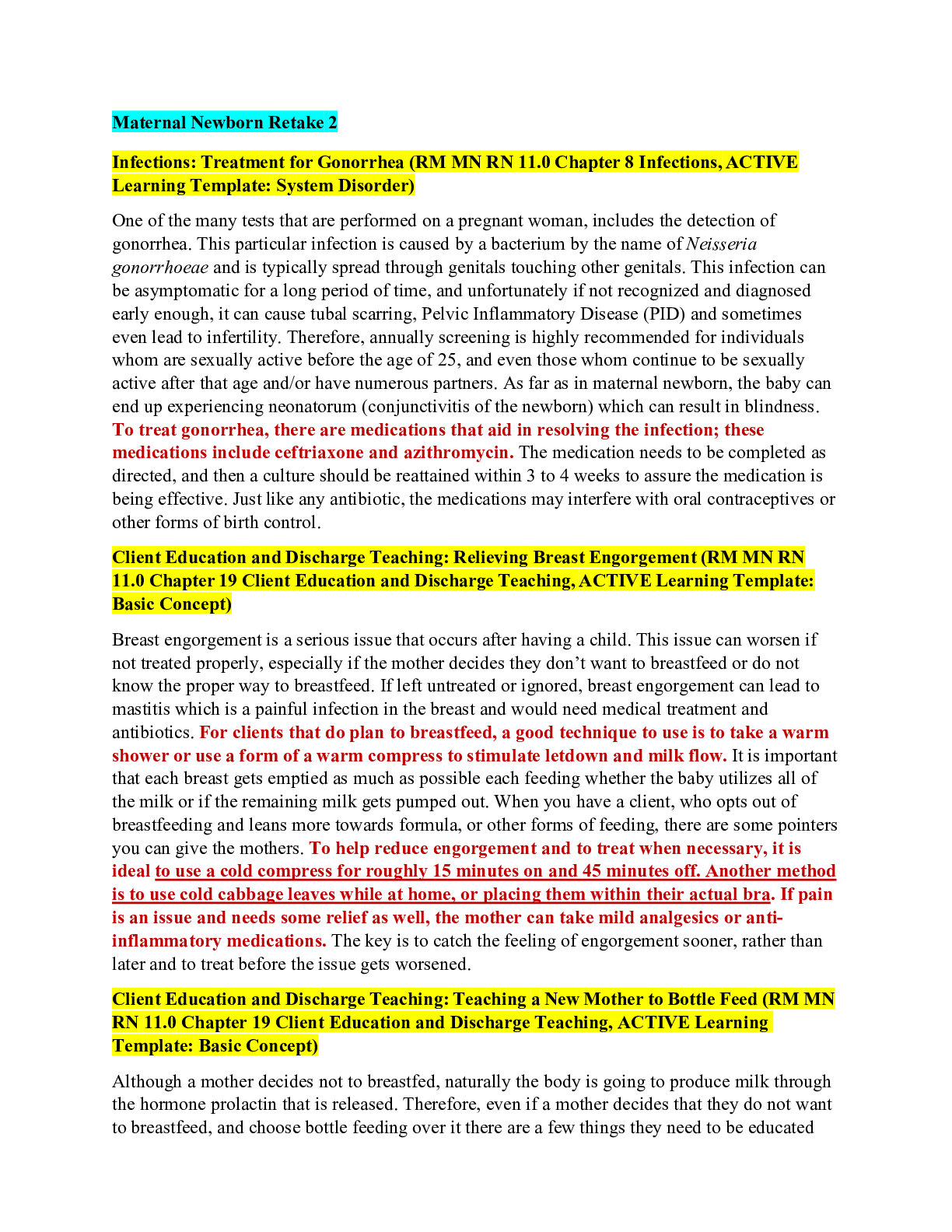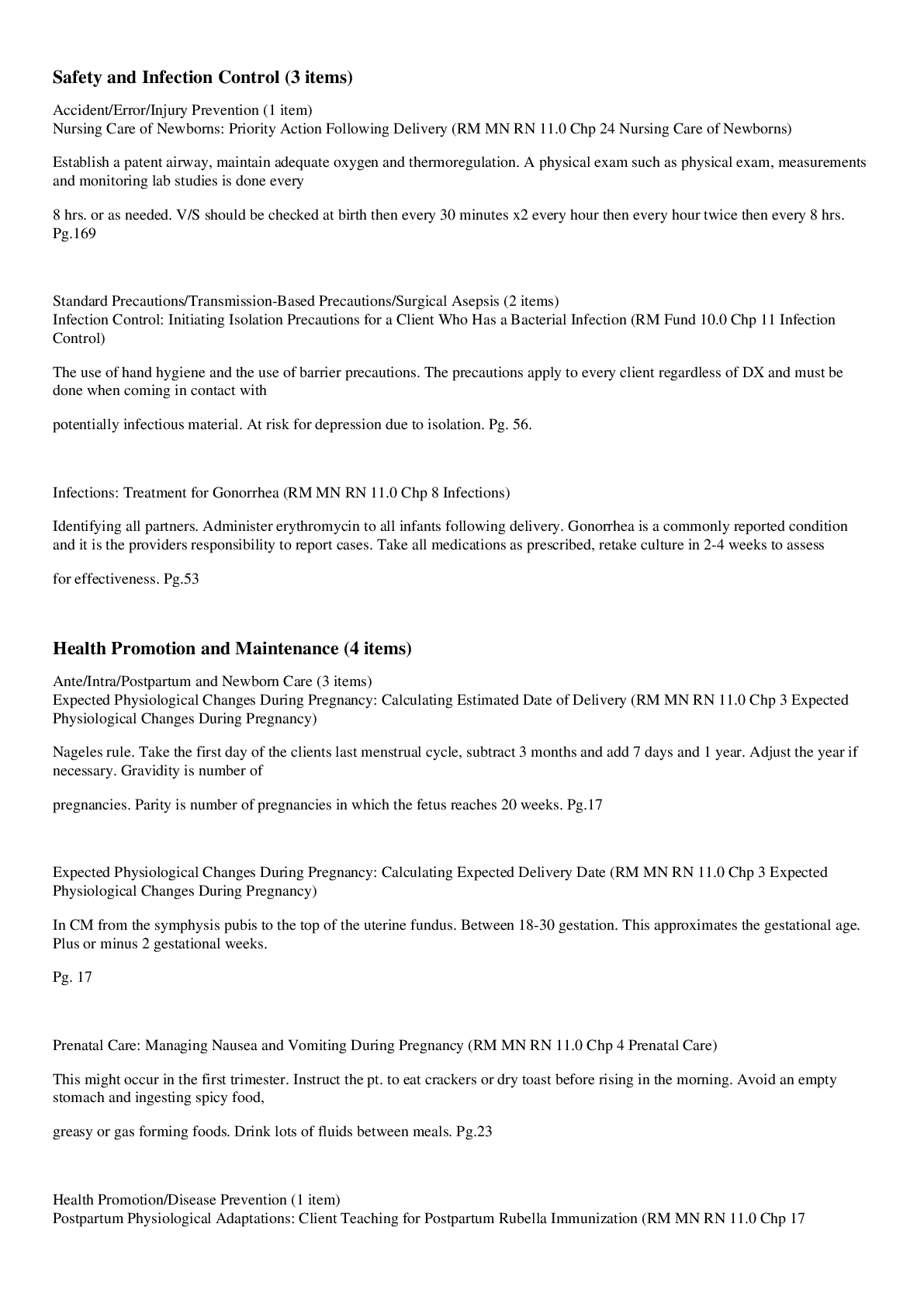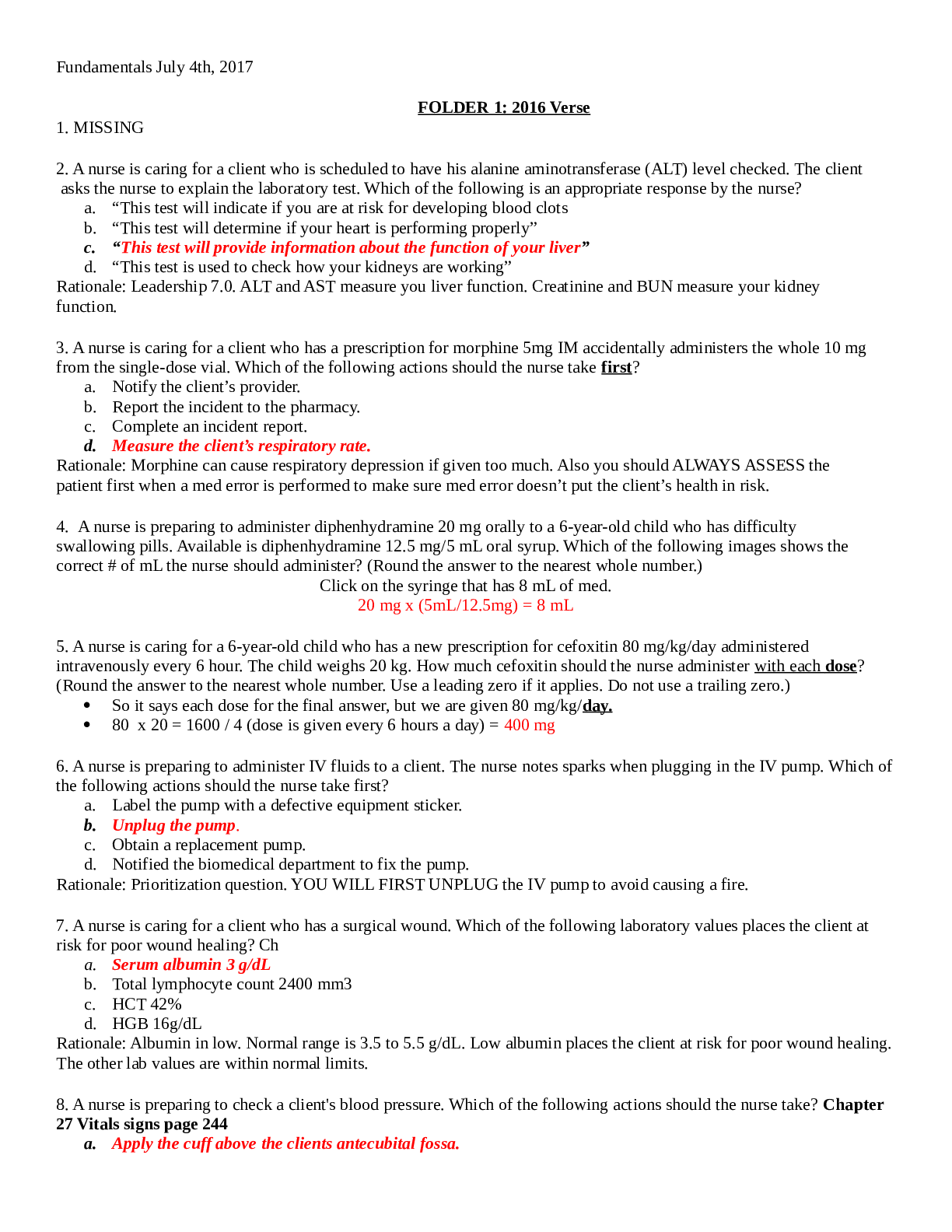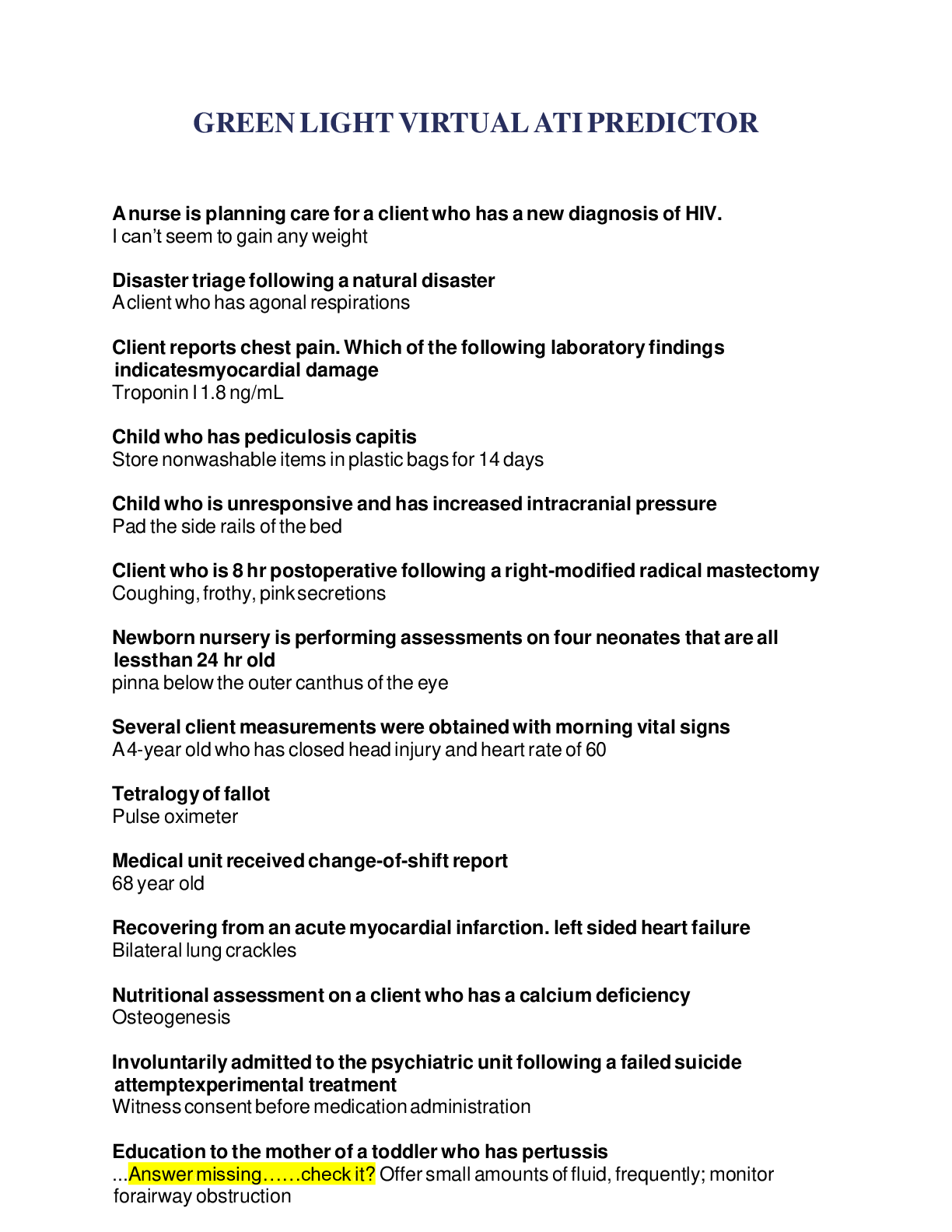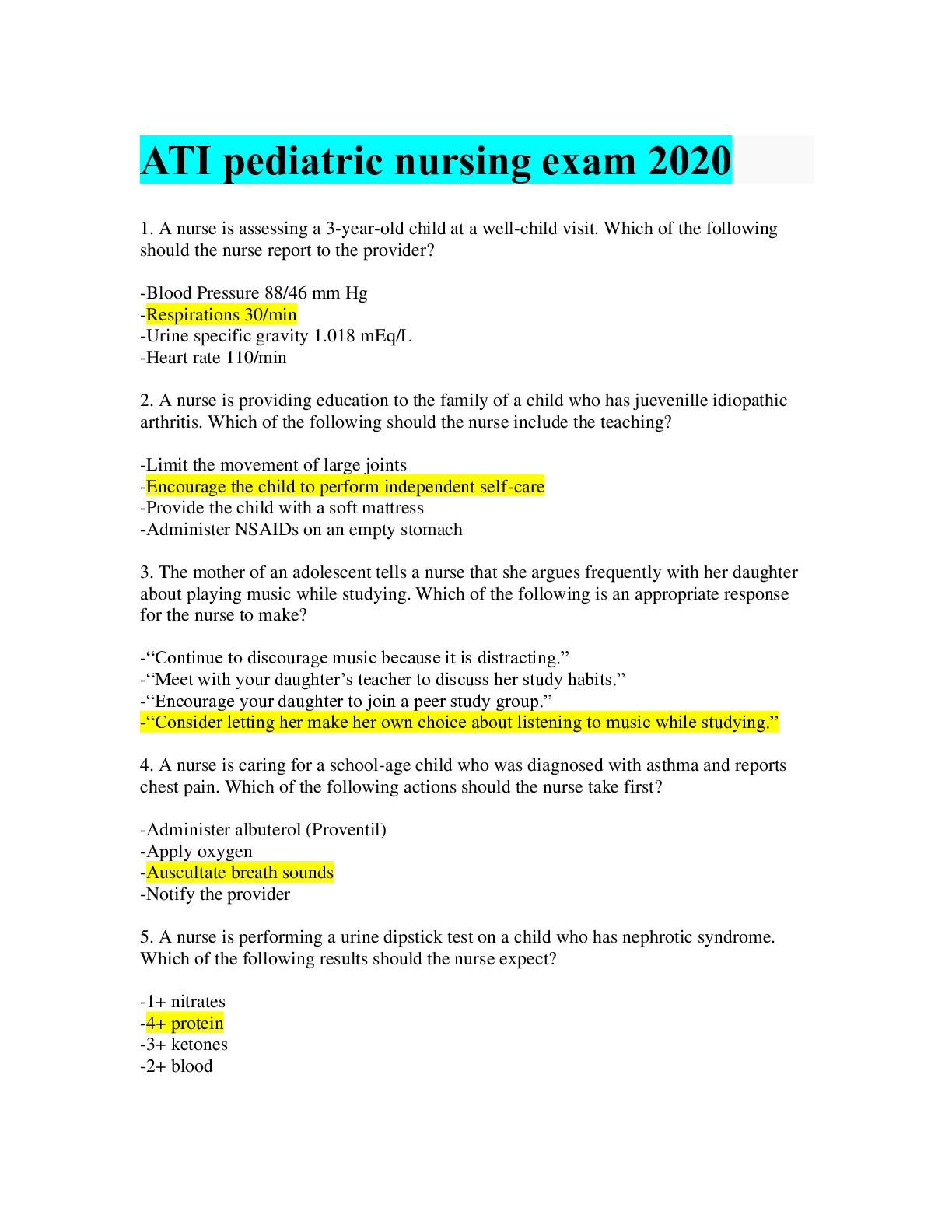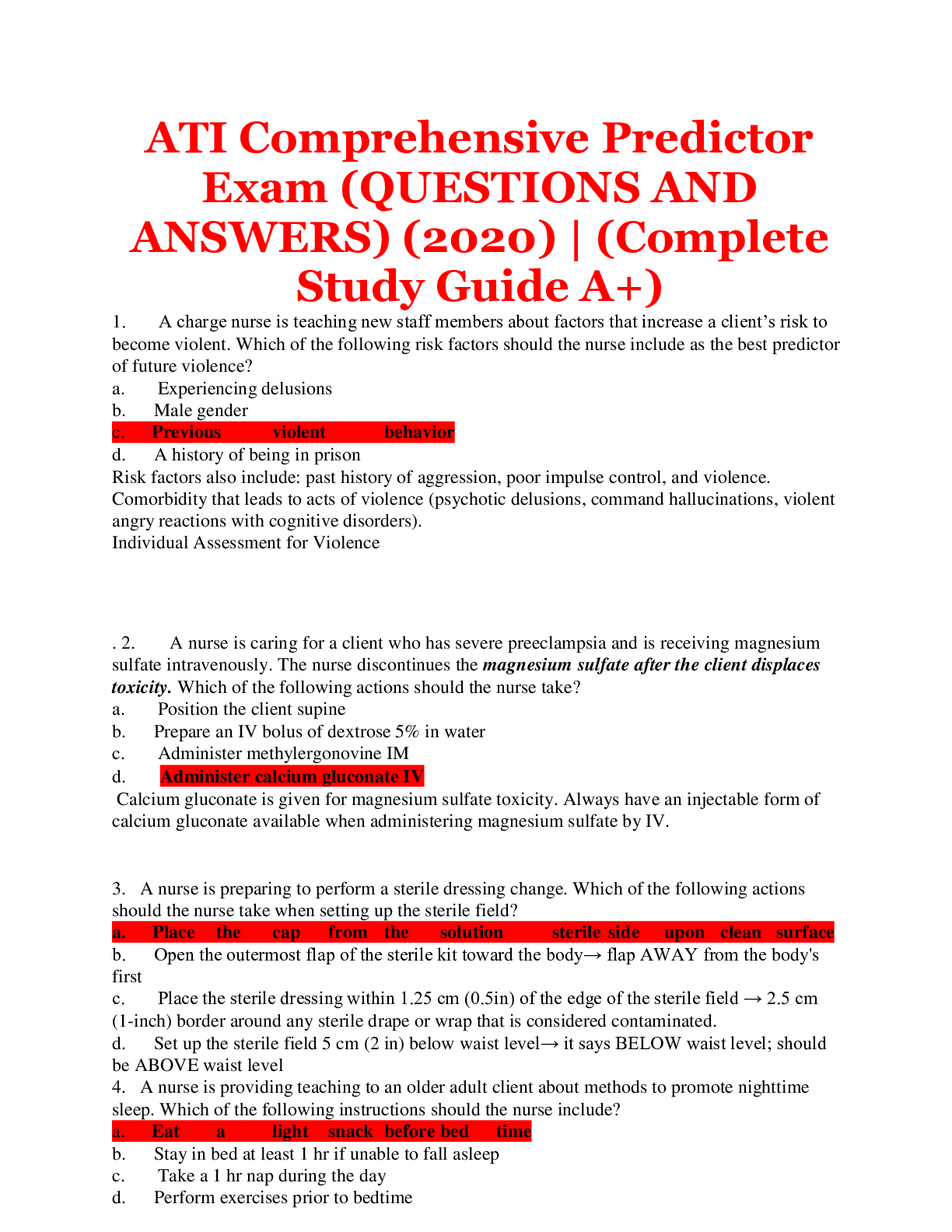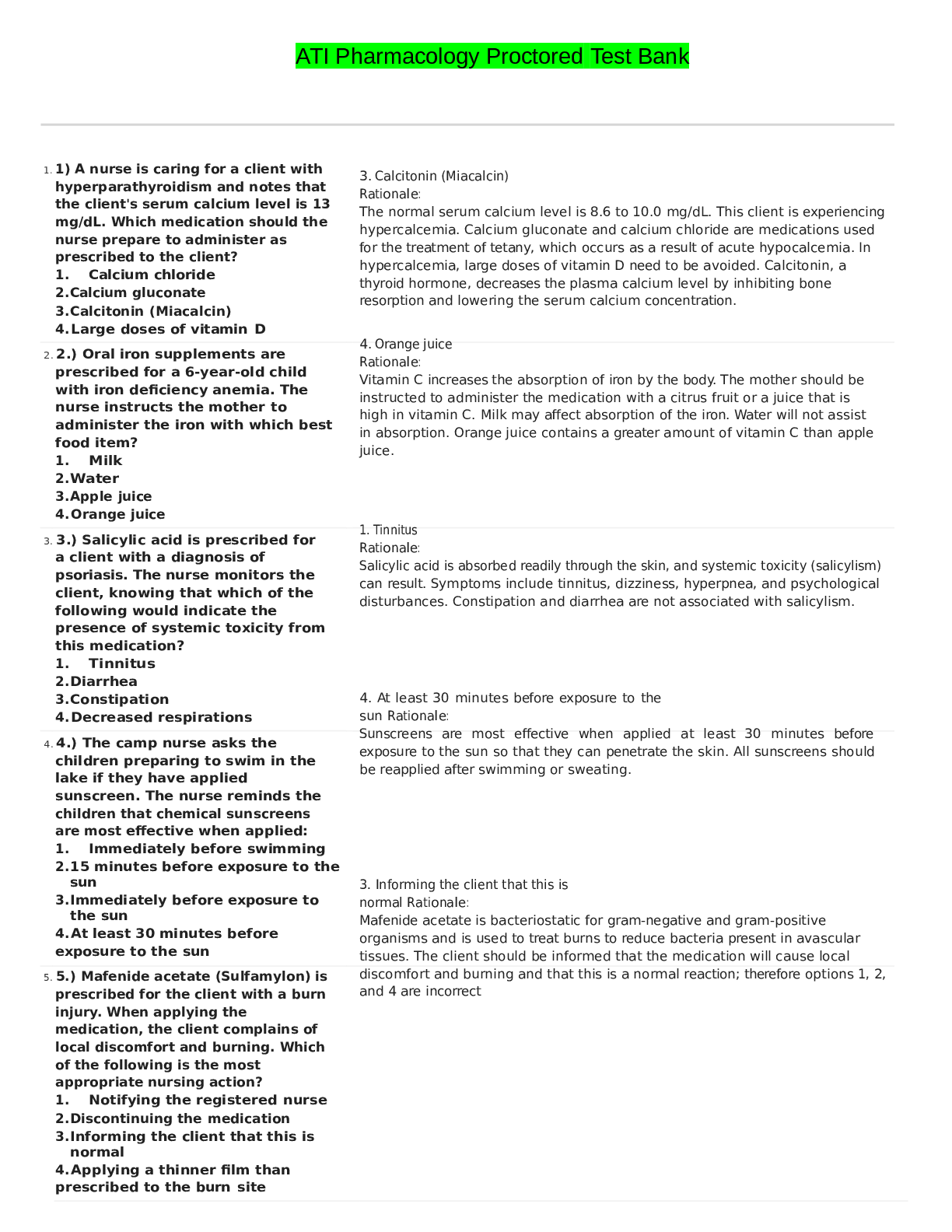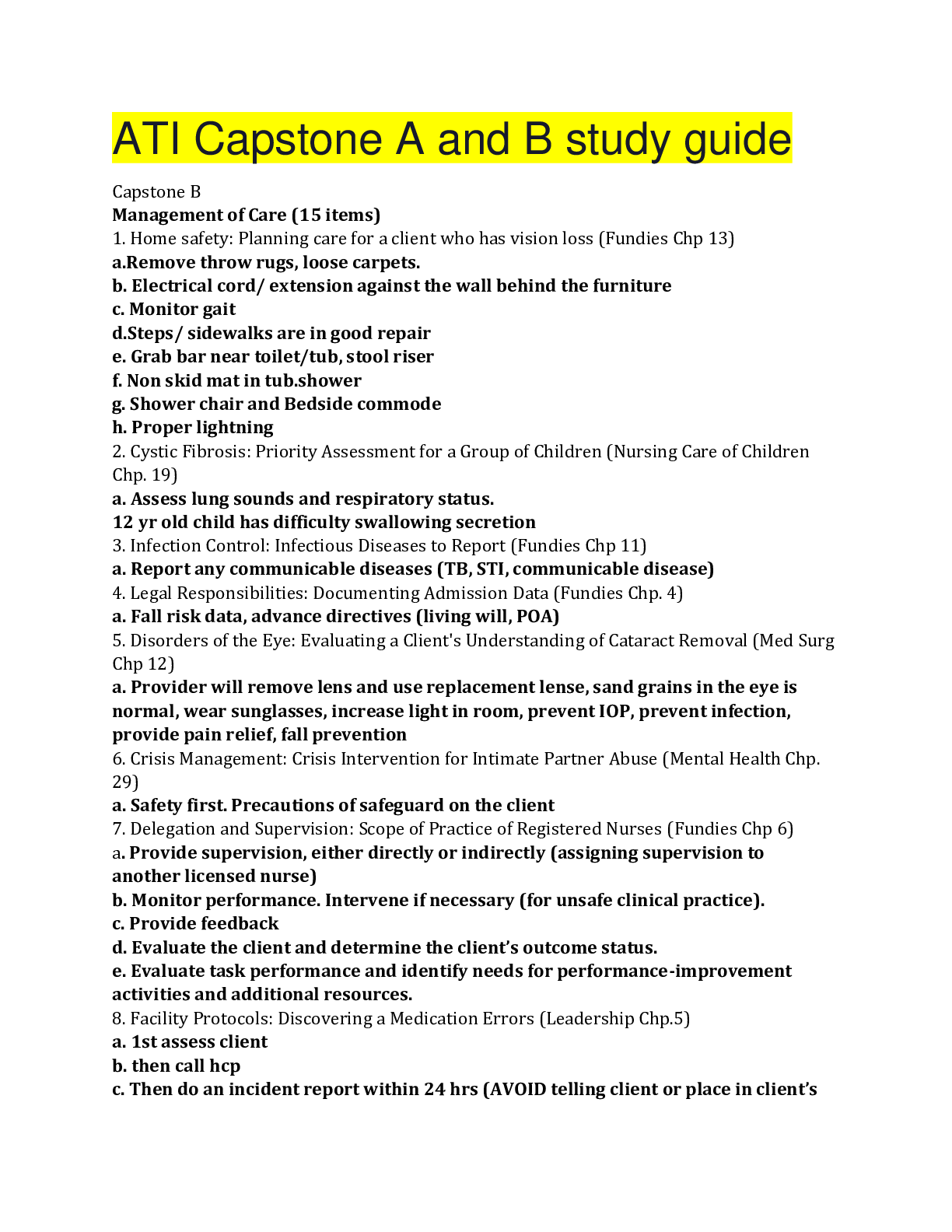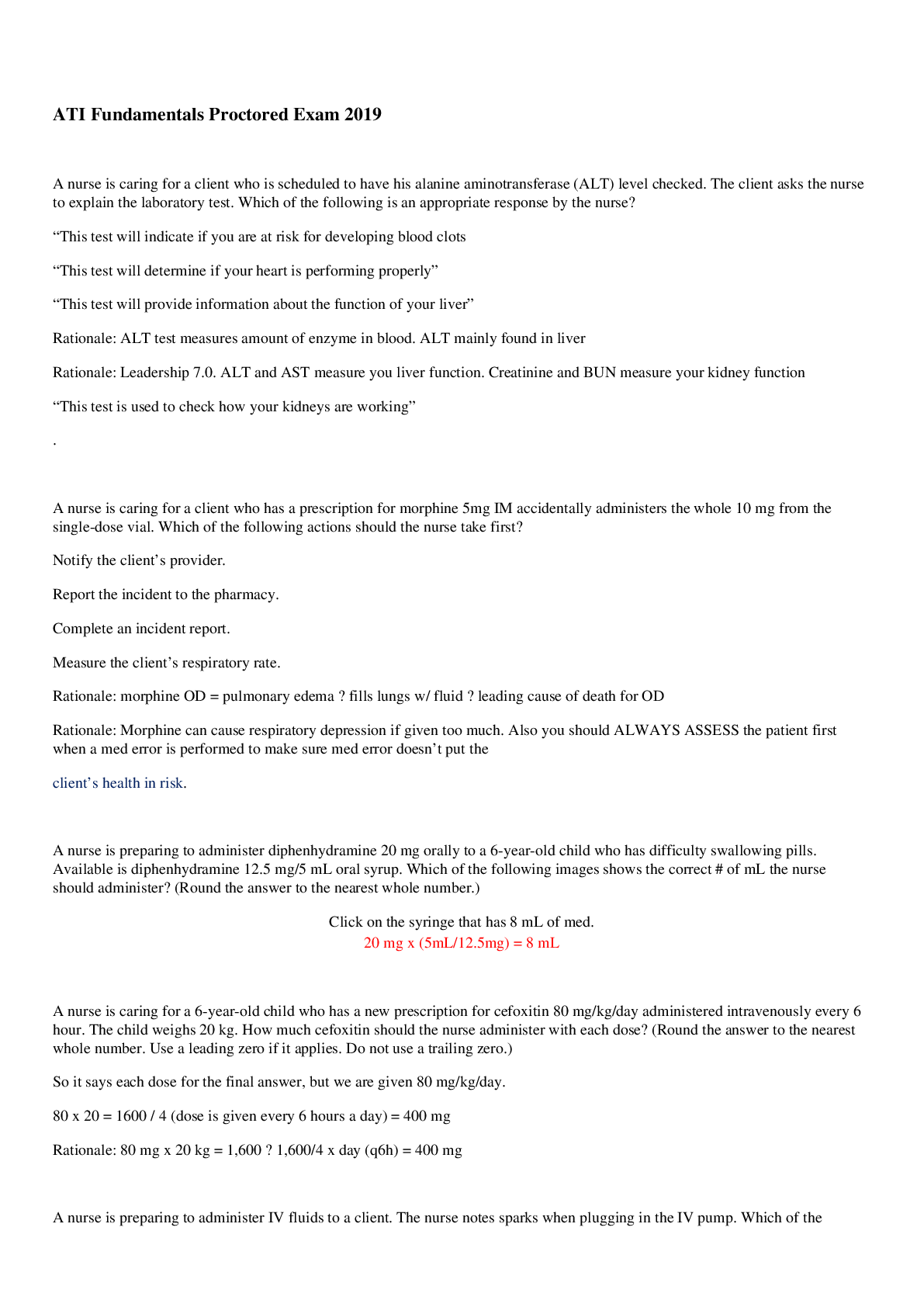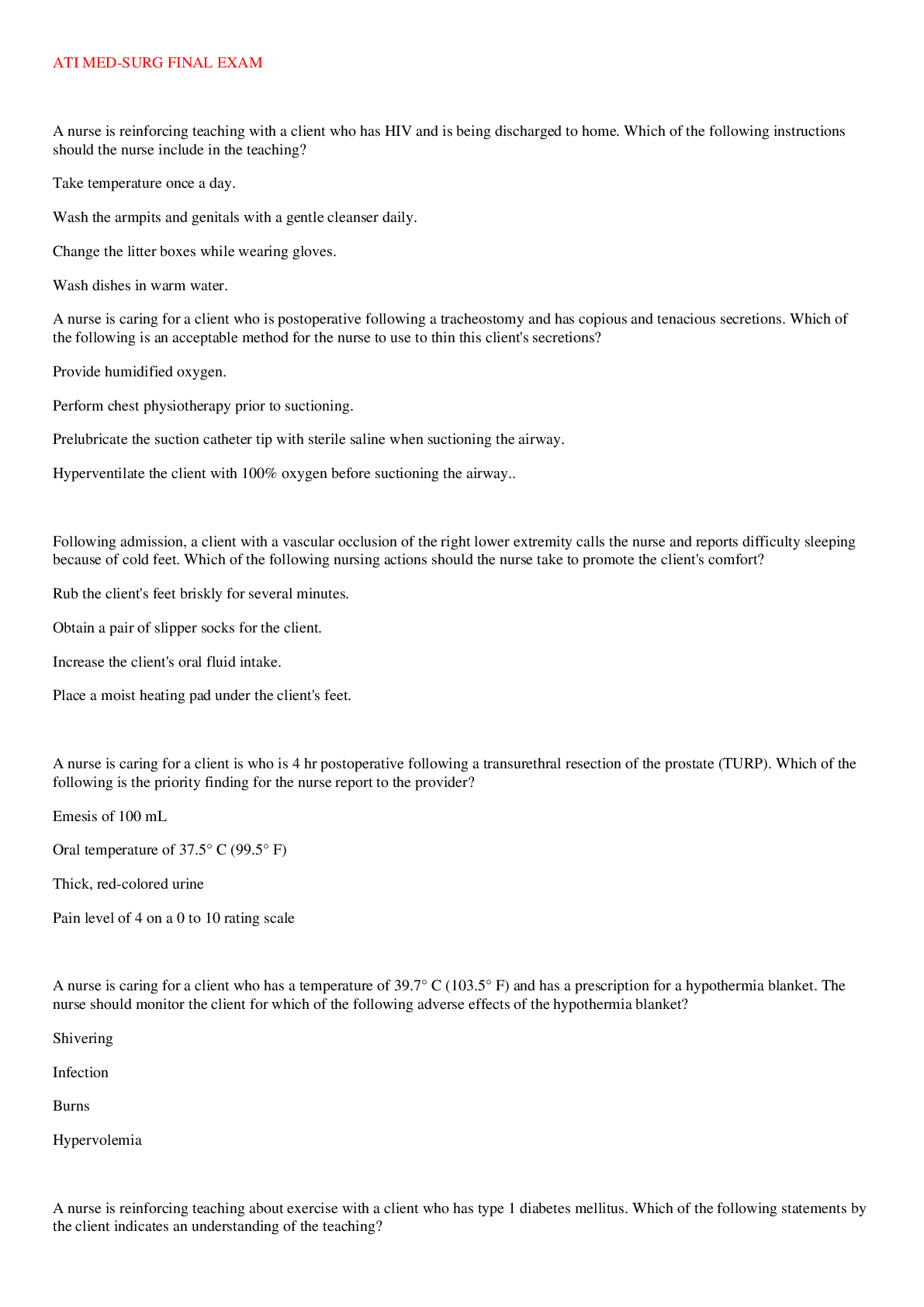*NURSING > QUESTIONS and ANSWERS > ATI Pediatric Practice B complete-updated-questions-and-answers (All)
ATI Pediatric Practice B complete-updated-questions-and-answers
Document Content and Description Below
A guardian calls the clinic nurse after his child has developed symptoms of varicella and asks when his child will no longer be contagious. Which of the following responses should the nurse make? • ... “When your child no longer has a fever.” • “Three days after the rash started.” • “Six days after lesions appear if they are crusted.” (The nurse should inform the guardian that a child will stop being contagious around 6 days after the lesions appeared, as long as they are crusted over.) • “When your child’s lesions disappear.” • A nurse is collecting date from a child during a well-child visit. The nurse should recognize that which of the following findings places the child at a higher risk for abuse? • The child is 6 years old. • The child is male. • The child was born at 30 weeks of gestation. (The nurse should identify that children who are born prematurely are at greater risk for abuse because of the potential for impaired bonding during early infancy.) • The child was born via cesarean birth. • A nurse is reinforcing teaching with the guardian of a child who has a new diagnosis of rheumatic fever. Which of the following statements by the guardian indicates an understanding of the teaching? • “I should not give my child aspirin for pain or fever.” • “My child will take antibiotic for 6 months.” • “My child might have a period of irregular movement of the extremities.” (The nurse should instruct the guardian that the child might experience chorea weeks or months after the initial diagnosis. Chorea is a temporary lack of coordination and the presence of sudden, irregular movements or periods of clumsiness.) • “I should expect there to be blood in my child’s urine.” • A nurse is collecting data from an infant during a well-child visit. Which of the following sites should the nurse use when obtaining the infant’s heart rate? • Apical (The nurse should use the apical pulse to obtain the infant's heart rate and count it for a full minute, because it gives a reliable rate and rhythm and provides accurate baseline assessment data. In an infant, the apical heart rate is auscultated at the fourth intercostal space lateral to the midclavicular line.) • Radial • Carotid • Femoral • A nurse is preparing a toddler for suturing of a minor facial laceration. The nurse should place the toddler in which of the following restraints? • Mummy restraint (The nurse should use a mummy wrap when a short-term restraint is needed for treatment of the toddler that involves the head and neck. The nurse should always use the least amount of restraint necessary.) • Jacket restraint • Elbow restraint • Wrist restraint • A nurse is reinforcing dietary teaching with the parent of a 2-year-old toddler. Which of the following should the nurse include in the teaching? • "It is recommended that the toddler consumes no more than 12 ounces of fruit juice each day." • "An appropriate serving size is 1 tablespoon of food per year of age." (The nurse should include that an appropriate serving size for a 2-year-old toddler is 1 tbsp of food per year of age.) • "Introduce healthy finger foods like carrots and celery sticks." • "Encourage 5 cups of low-fat milk each day." • During a well-child visit, the parent of a toddler expresses concern to the nurse that the toddler takes several hours to fall asleep at night. Which of the following recommendations should the nurse make? • Vary the time the toddler goes to bed each night • Allow the toddler to watch television before bedtime • Provide the toddler with a favorite toy at bedtime. (The nurse should recommend to the parent that providing the toddler with a favorite toy at bedtime will help the toddler to feel more secure and facilitate sleep.) • Increase the toddler's activity prior to bedtime • A nurse is assisting with the care for a 7-month-old infant who has a cleft palate. Which of the following actions should the nurse take to decrease the infant’s risk for aspiration? • Feed the infant in supine position. • Encourage the mother to breastfeed the infant exclusively. • Burp the infant frequently during feedings. (Infants with a cleft palate have difficulty creating a seal around a bottle. Burping the infant frequently, following every ounce of fluid consumed, dissipates swallowed air and helps to prevent aspiration.) • Perform nasotracheal suctioning if coughing occurs • A nurse is reviewing the laboratory values of a school-age child who has iron deficiency anemia. Which of the following findings should the nurse expect? • Hgb 9.0 g/dL (The nurse should expect a child who has iron deficiency anemia to have an Hgb level below the expected reference range of 9.5 to 15.5 g/dL. An Hgb of 9.0 g/dL is below the expected reference range.) • Hct 37% • Iron 100 mcg/dL • Total iron binding capacity 325 mcg/dL [Show More]
Last updated: 1 year ago
Preview 1 out of 15 pages

Reviews( 0 )
Document information
Connected school, study & course
About the document
Uploaded On
Apr 08, 2021
Number of pages
15
Written in
Additional information
This document has been written for:
Uploaded
Apr 08, 2021
Downloads
0
Views
38


.png)
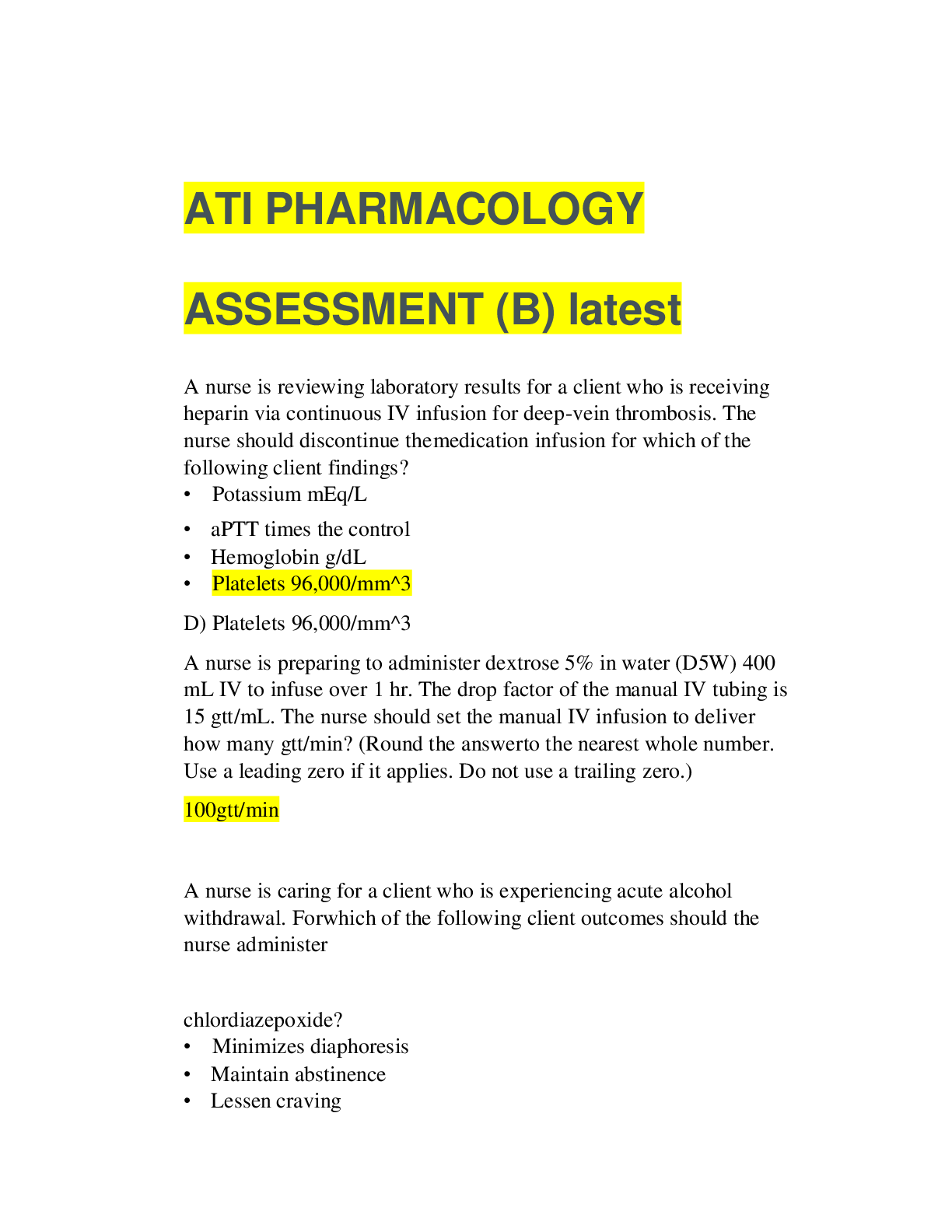

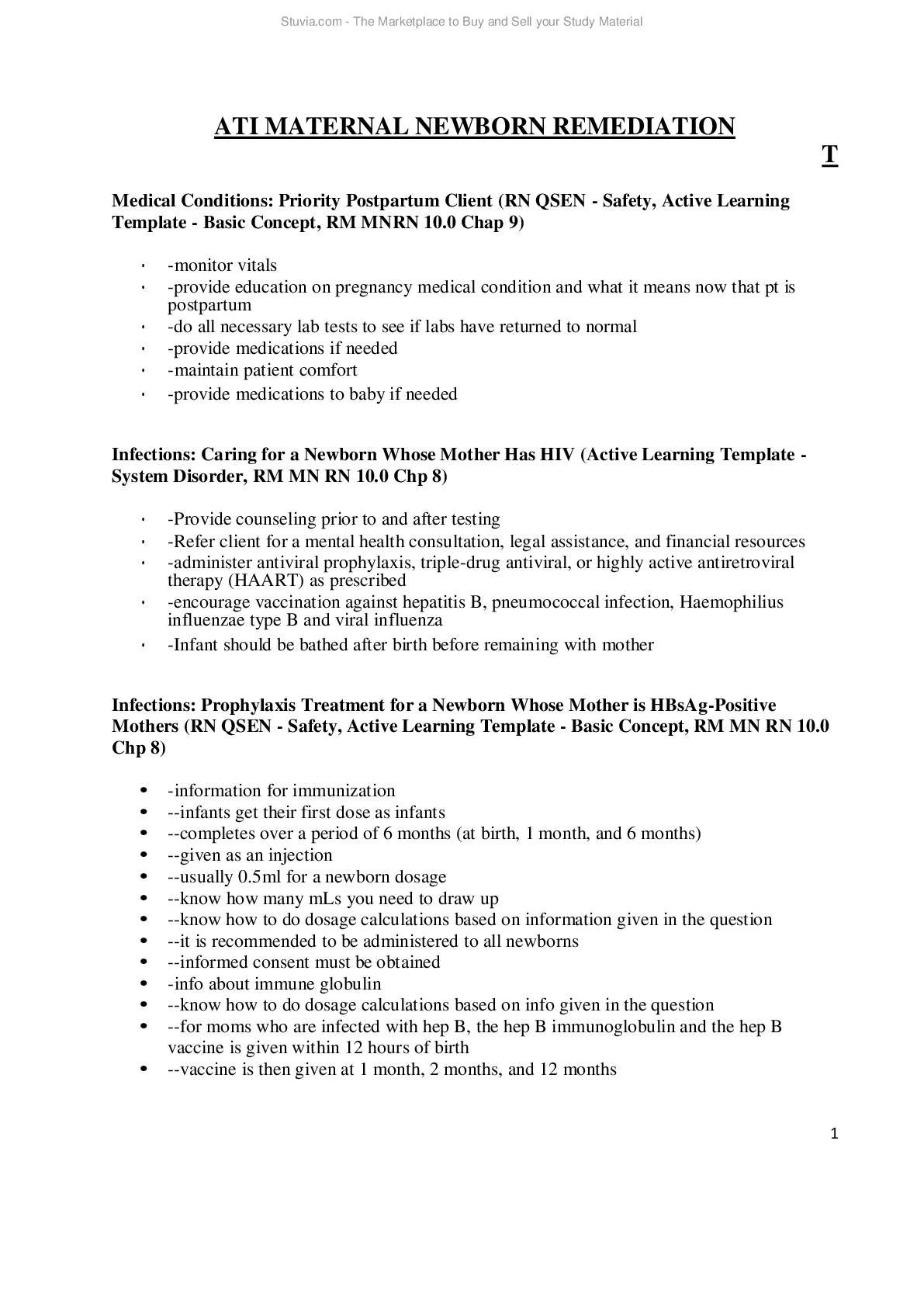
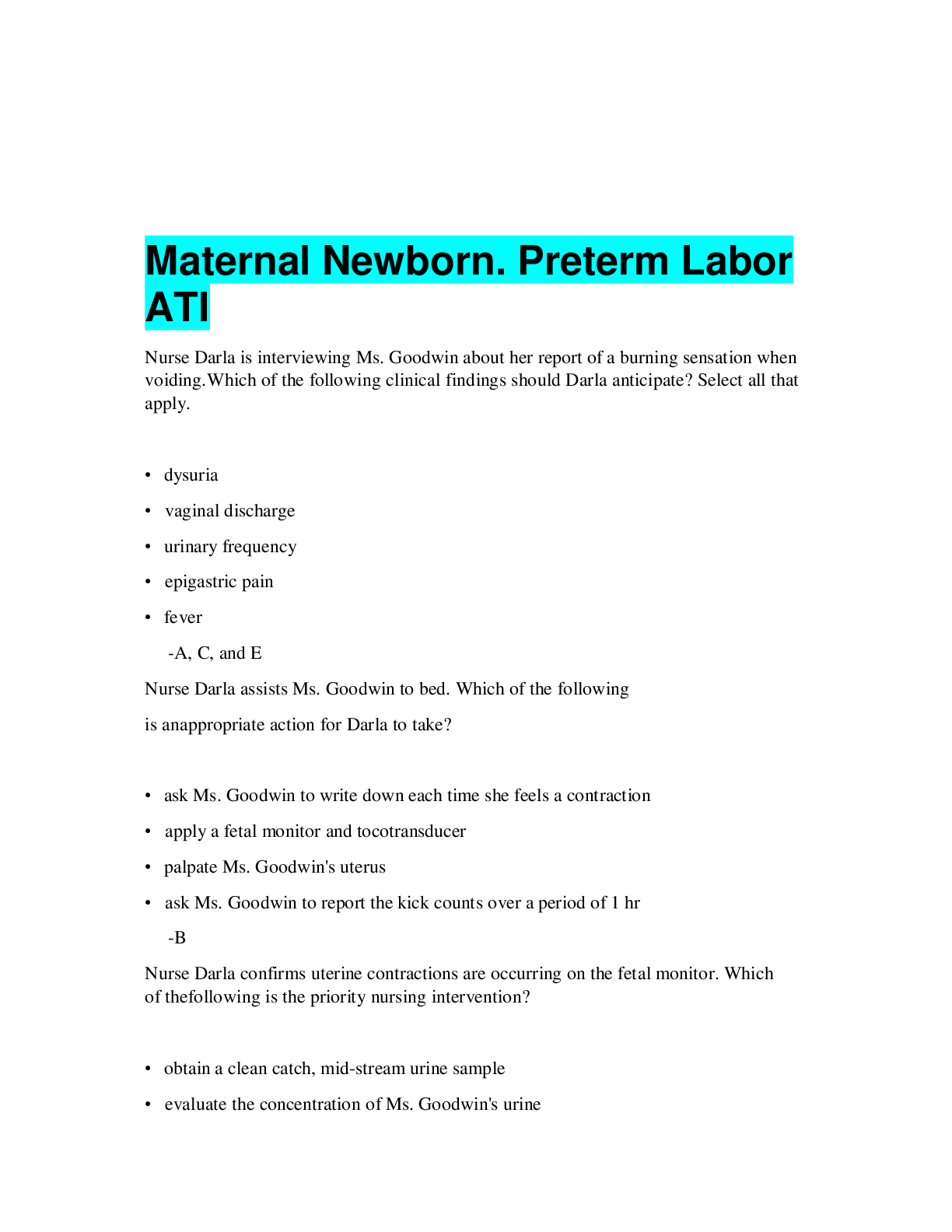
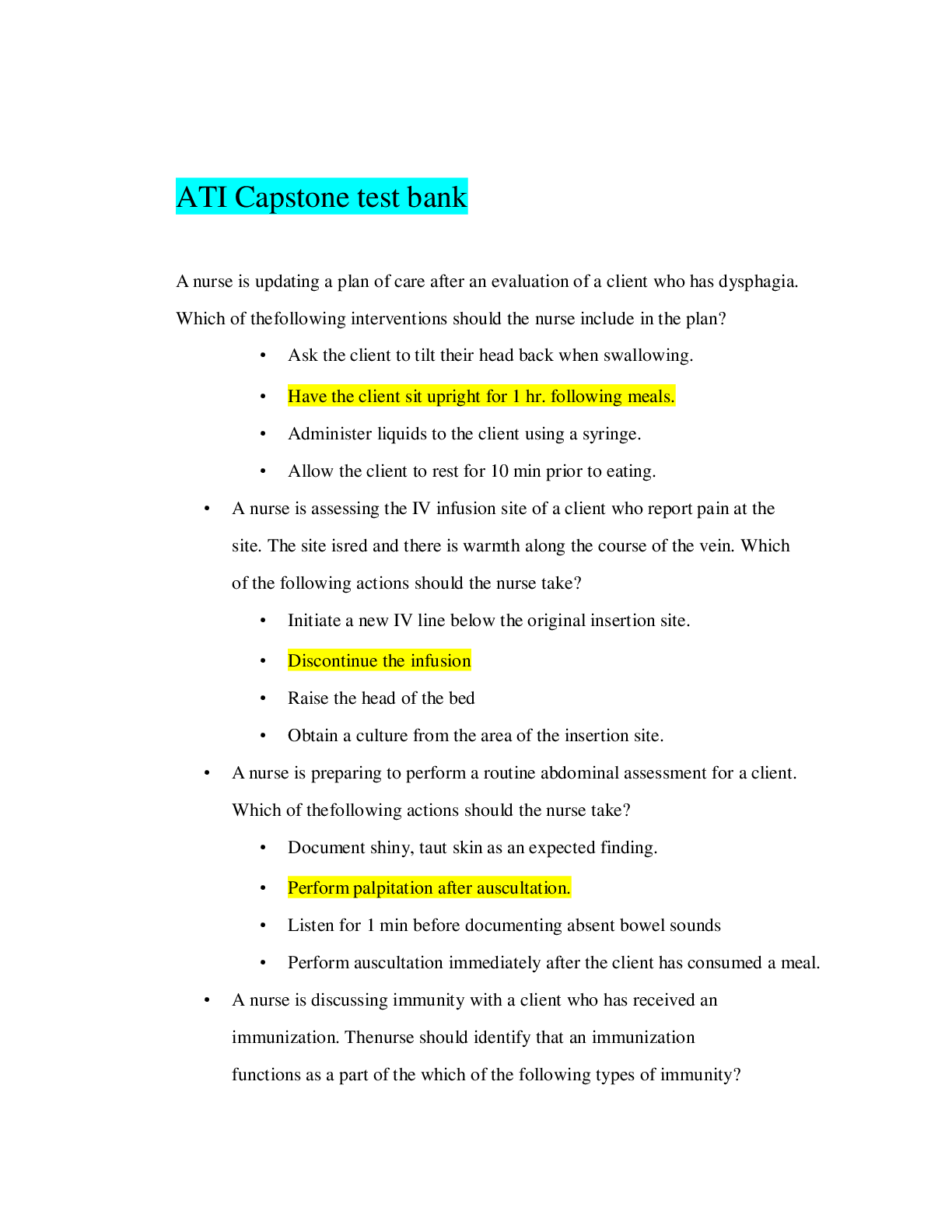
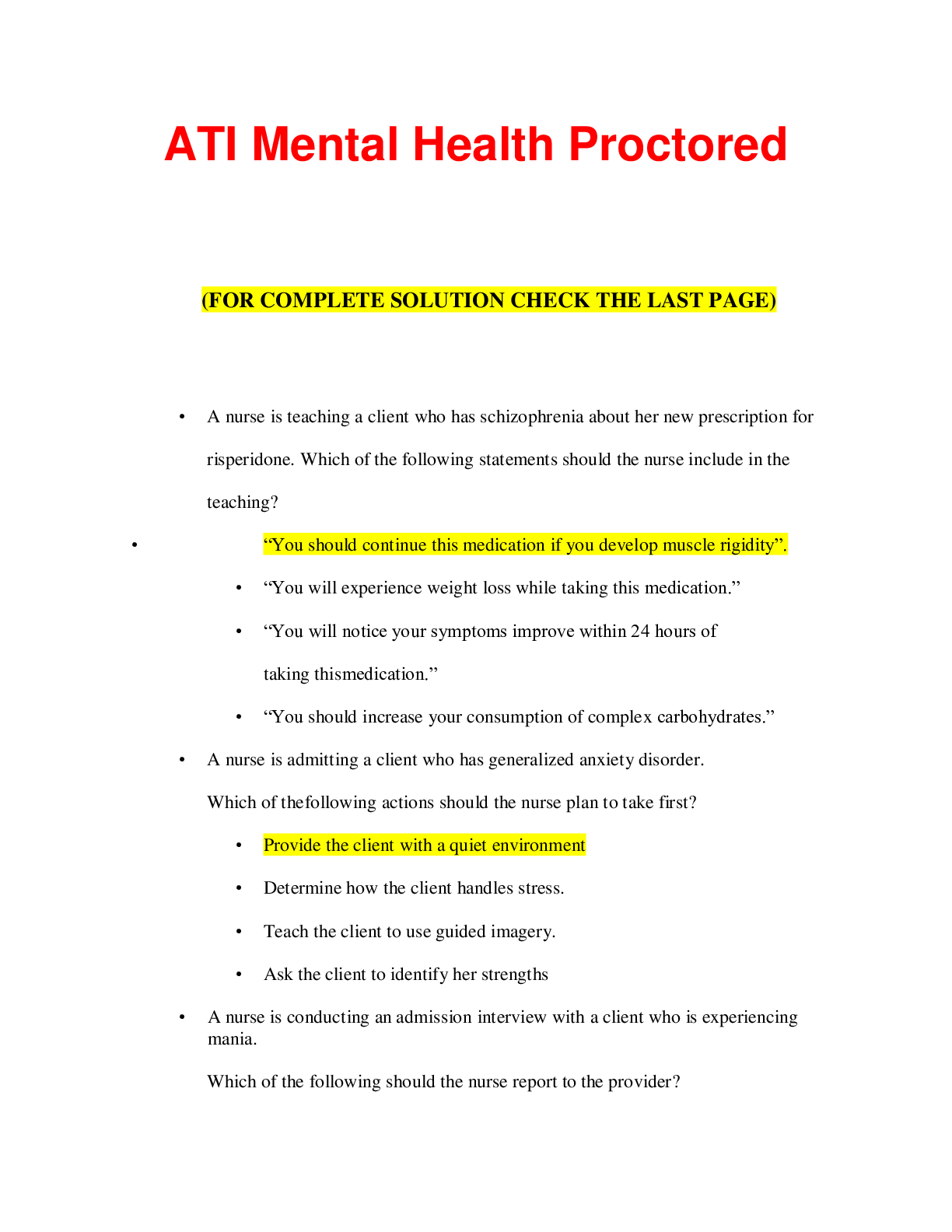
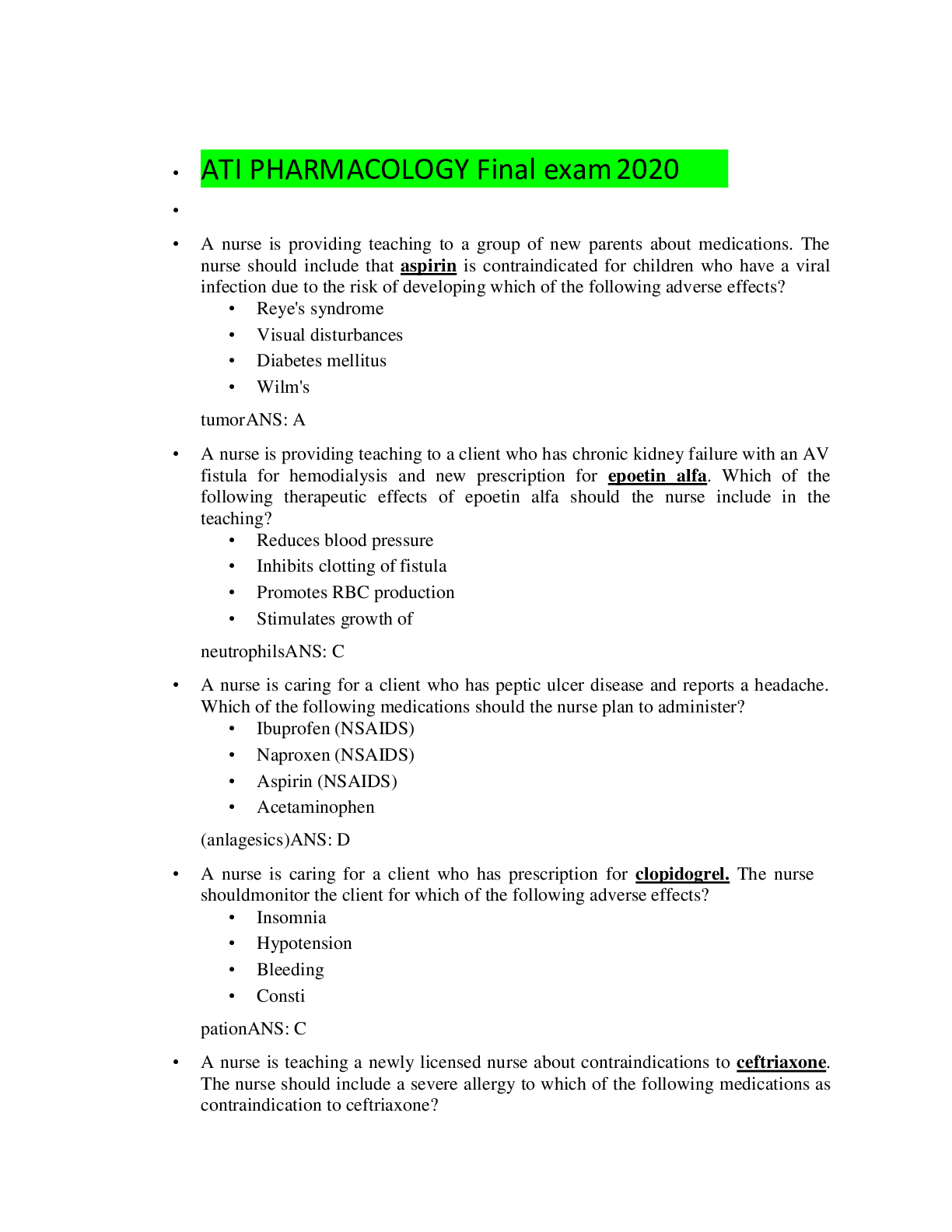
.png)
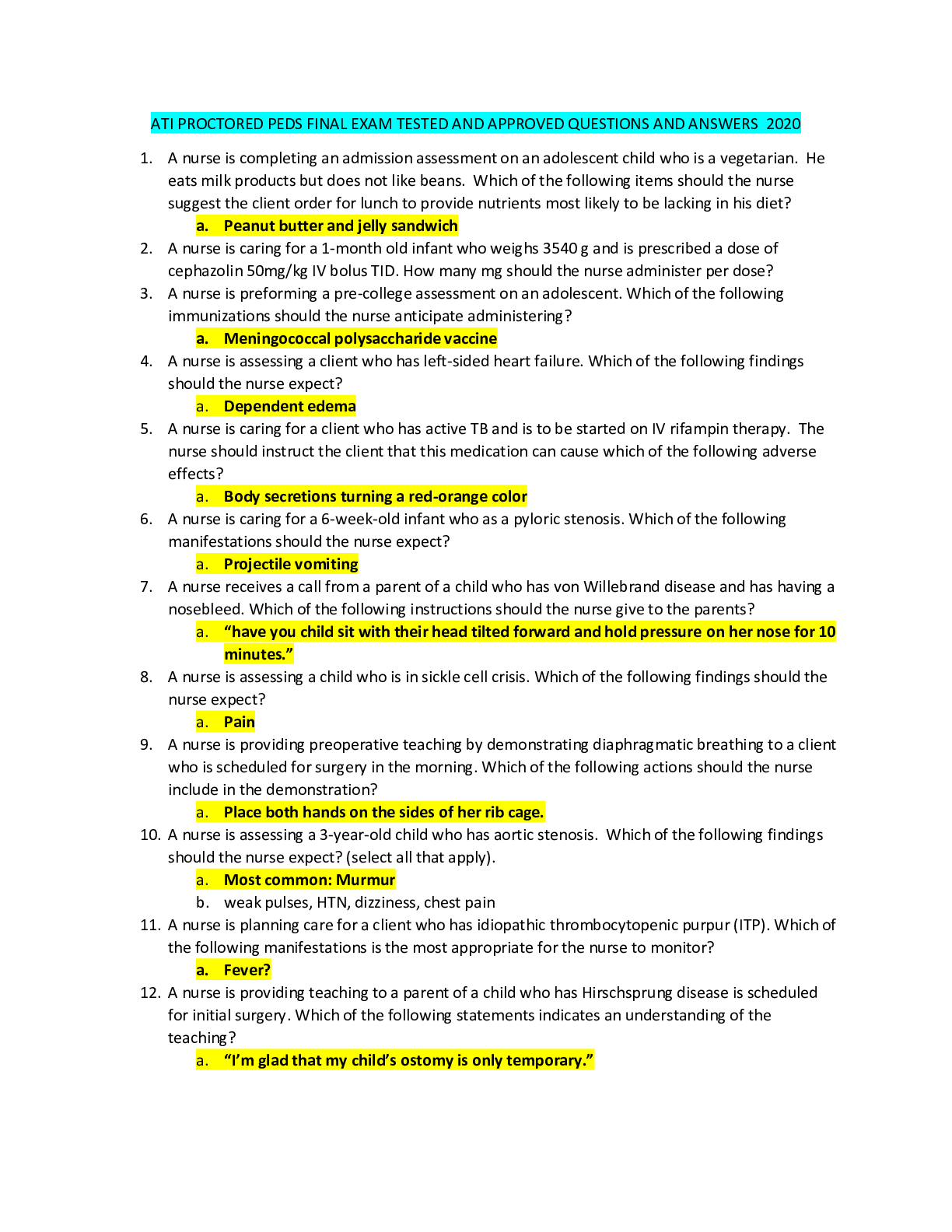


.png)
.png)


